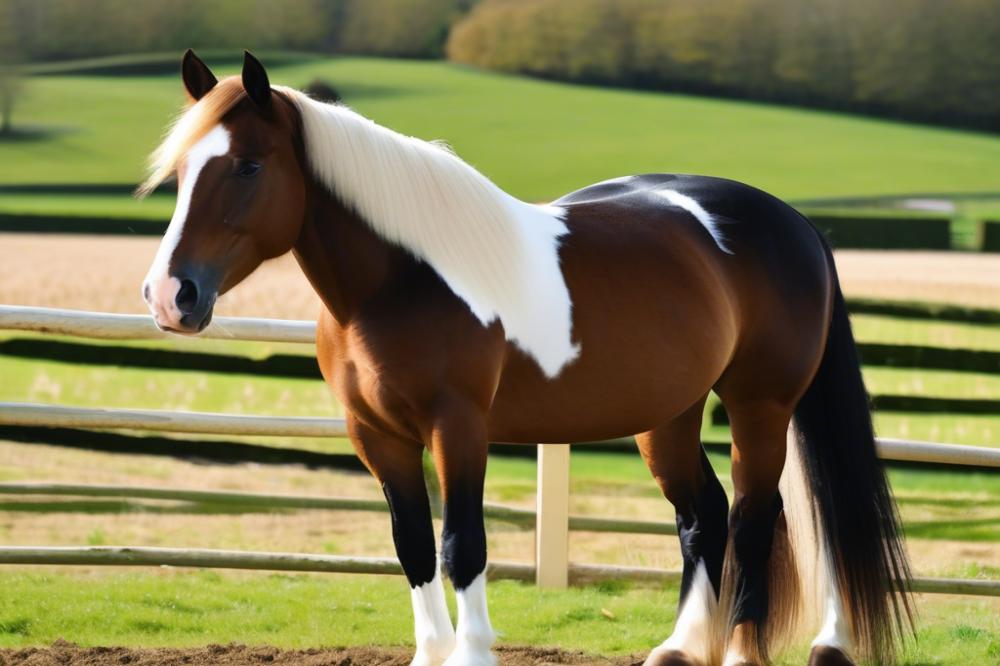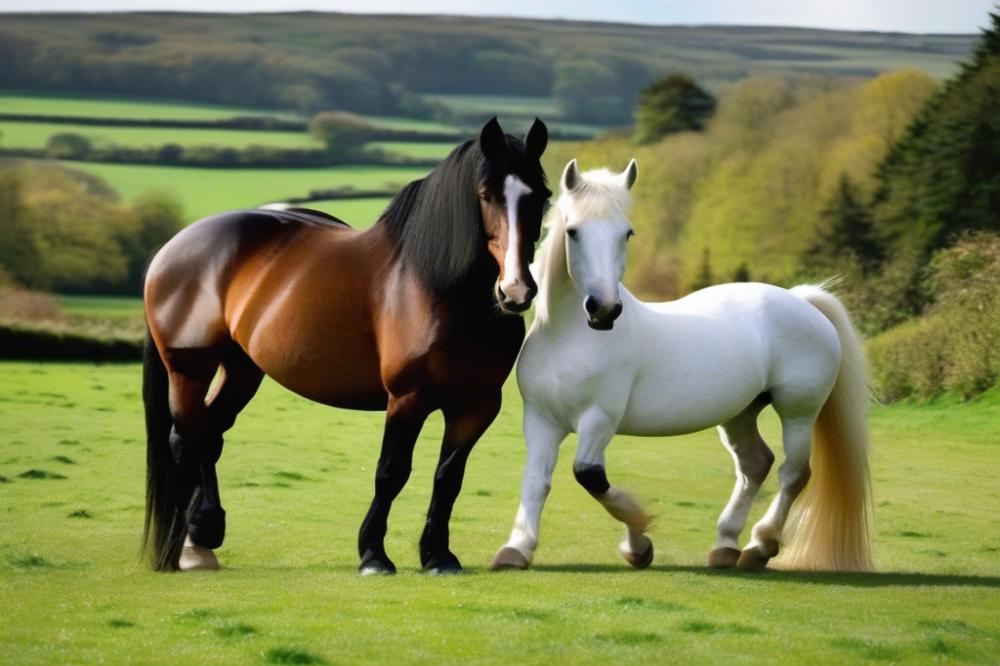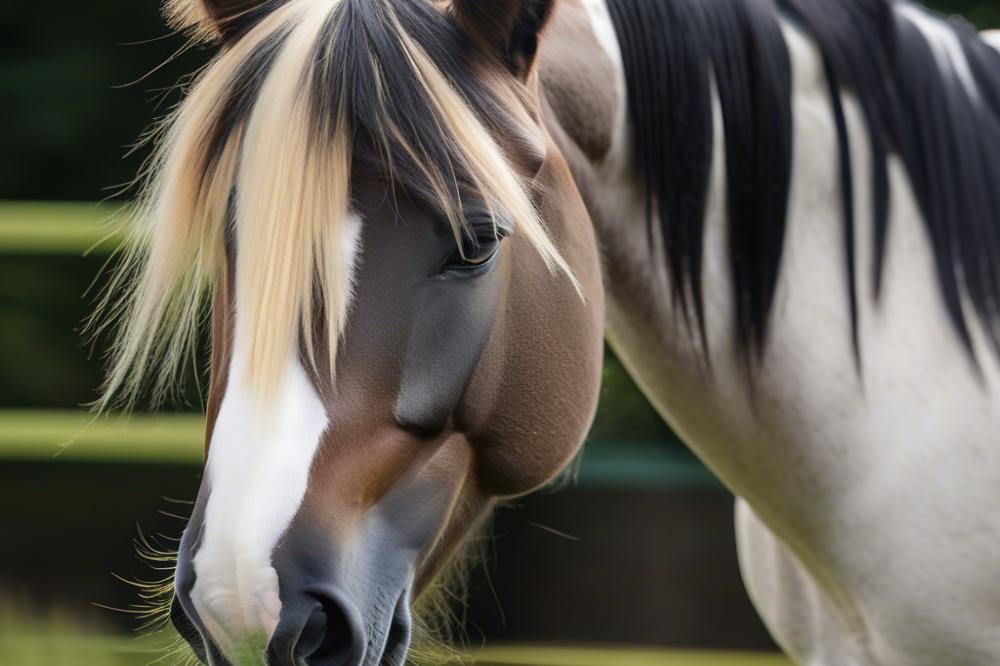Welcome to the World of Irish Cob Horses
Irish Cob horses are more than just a pretty face, they come with a fascinating history and a spirited personality. These strong and sturdy animals, often called Gypsy Cobs or Tinkers, were originally bred by traveling communities in Ireland and the UK. They’re known for their impressive build, distinctive feathering on their legs, and a temperament that is as gentle as a spring breeze. With their thick manes and loveable nature, it’s no wonder they capture the hearts of many.
Why Judging Matters in Horse Shows
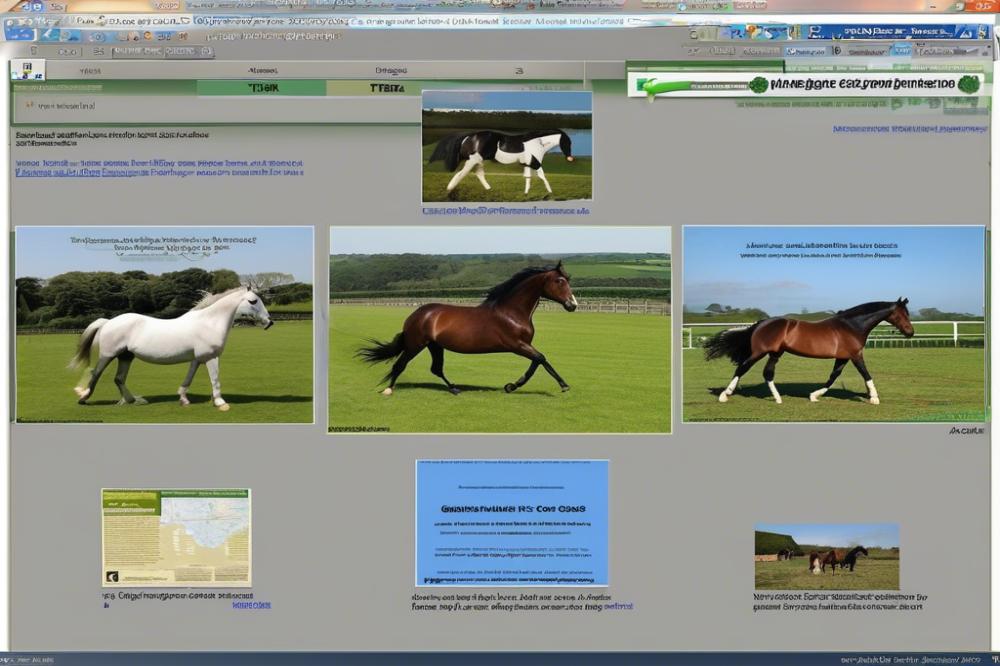
Exploring the world of judging reveals much about the dedication involved in showcasing these incredible creatures. When expert judges evaluate horses at shows, they consider a variety of factors, from physical appearance to the horse’s behavior under pressure. This process doesn’t just highlight the best of the best, but it also promotes proper horse care and encourages best practices in horse training. Think of it as a school where every horse learns and grows through experience. After all, who wouldn’t want to polish their equestrian techniques and come out shining like a star?
What You Can Expect from This Article
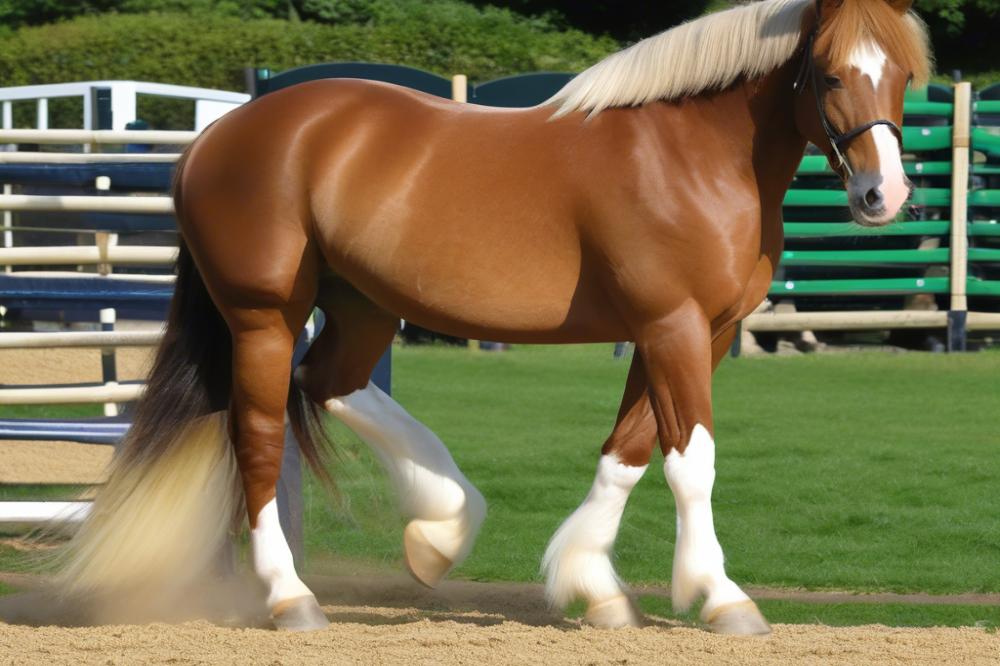
The purpose of this article is to guide you through the ins and outs of judging Irish Cob horses. We aim to provide you with a comprehensive judging guide, blending insights with fun, accessible facts. As we navigate this topic, we’re hoping to sprinkle in some humor and personal stories to keep things lively. Perhaps you’ll even picture yourself standing ringside, watching a majestic Irish Cob prance by, showcasing all its charms—and maybe even comparing it to the standardbred vs thoroughbred debate swirling around in the equestrian world.
As we delve deeper, you’ll find discussions on proper preparation before a show and the importance of grooming. We might even touch on why different breeds, like the budyonny horse, exhibit their own unique strengths and weaknesses. By the article’s end, our hope is to enrich your understanding and appreciation of these marvelous animals. So grab a cup of something warm, and let’s get started on this exciting journey!
Understanding the Irish Cob Horse
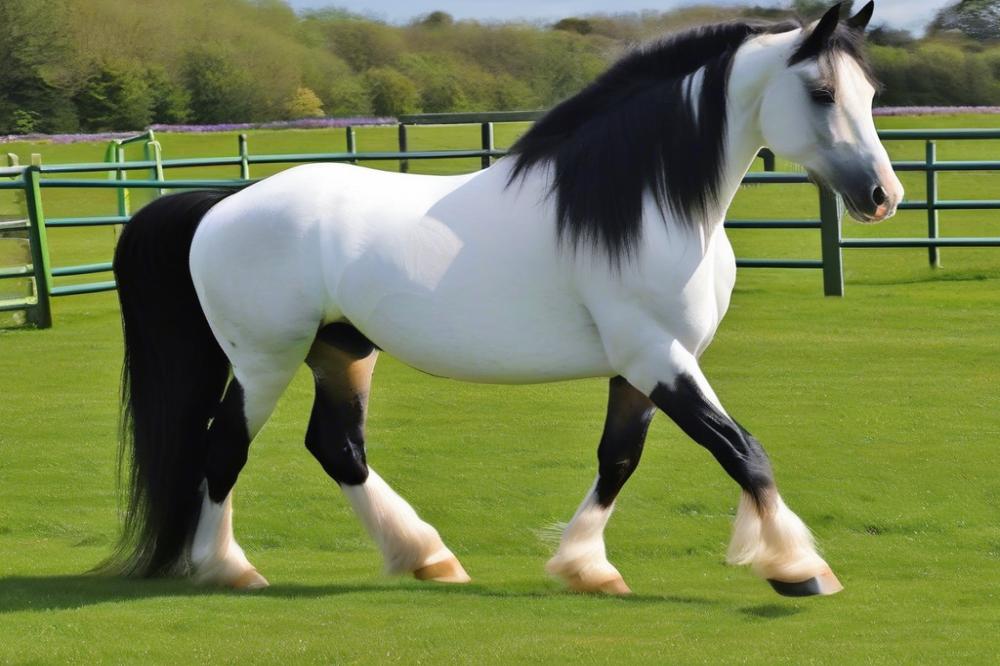
History and Origin of the Breed
The Irish Cob horse has a rich history that goes way back. This breed emerged from the lush landscapes of Ireland, where sturdy horses were needed for work and transport. Originating from the Celtic horses, they played a significant role on farms and in rural life. The Irish had a practical reason for developing this breed. They combined strength and endurance with a gentle nature, making them ideal for various tasks. Over generations, these horses were cherished companions, known for their loyalty and hardiness.
As the years passed, their popularity grew well beyond Ireland. Equestrian events featuring Irish Cobs gained attention worldwide. Today, they represent not just a breed but a piece of Irish culture and heritage.
Key Characteristics and Traits
Irish Cobs are well-known for their versatile personality. They often have a kind and friendly demeanor, making them suitable for families and riders of all levels. Their sure-footedness and calm nature are big pluses, especially for beginners. With an abundance of feathering on their legs, they have an unmistakable appearance. Their coats can come in many colors; you might spot some with shiny black coats or others with dapples.
Fitness is important for any horse, and the Irish Cob excels in that area. While they may not be the fastest horses around, their stamina carries them through long rides or heavy work. Remember, they also need proper horse care and training to shine in the show ring or on the trail.
Conformation Standards
When judging an Irish Cob horse, a few things stand out. The ideal conformation reflects balance and strength. A broad forehead and big, expressive eyes give them a friendly look. Their thick neck and deep chest are signs of power and endurance. Strong legs with well-defined joints support their sturdy frame.
Judges look for a level back, which is important for overall health. A well-set tail enhances their overall appearance. Each of these features plays a role in how they perform in equestrian techniques. Inspectors often use a judging guide to assess the horse’s build accurately.
In summary, knowing these traits helps both buyers and enthusiasts understand the true essence of the breed. No wonder Irish Cobs capture the hearts of many!
The Judging Process
When it comes to equestrian events, the judging of horses can be quite fascinating. Each show has a specific format that dictates how the horses will be evaluated. Some shows are all about competition, while others focus on showcasing skills and talents. Whether it’s a local fair or a big national competition, the excitement is palpable. All eyes are on those magnificent creatures as they strut their stuff in front of the judges.
Overview of Horse Show Formats
Horse shows can be organized in various ways. Some formats fit multiple disciplines, while others might zoom in on a specific type of performance. In a traditional format, horses are often put through their paces in different classes. Each class highlights something unique about the horse, whether it’s breed, age, or ability. For example, a class might concentrate on conformation, which looks at how the horse’s body is built. This is crucial information when it comes to horse care; a well-built horse often performs better.
In other formats, there might be an emphasis on speed or agility. These shows often showcase what the horse can do as they navigate jumps and obstacles. The judges observe carefully, noting each horse’s strengths and weaknesses as they perform. It is as much an art as it is a science!
Criteria for Judging Irish Cob Horses
When judging Irish Cobs, the criteria are quite specific. A balanced way of assessing the horse starts with its conformation. Judges look for a strong build, with considerable muscle and bone structure. A well-proportioned horse is easier to train and often performs better under pressure. Remember, these beauties aren’t just about looks though; personality matters too! The judges want to see if the horse is calm, attentive, and eager to please.
Good behavior is critical. An Irish Cob that behaves well while being ridden or led is more appealing than one that may be lively or difficult. However, that doesn’t mean a bit of spirit is unwelcome! After all, these horses are known for their energy and playful nature. A twist here, a jump there, and the judges will start taking notes.
Evaluation of Movement and Performance
Movement is where the magic happens! Observing how an Irish Cob moves gives valuable insights into its training and overall capabilities. Judges take note of the horse’s gait—whether it is smooth, fluid, and rhythmic. The horse’s ability to glide across the ground can speak volumes about the training techniques used. An efficient movement not only reflects good horse training but also suggests a strong, healthy horse.
Performance during the show is equally scrutinized. A judge looks to see how well the horse responds to commands and performs under pressure. Those little details matter. Did it complete the jumps? How did it react when the crowd cheered? A chorus of applause can send some horses into a tizzy, while others might thrive on the attention. That distinction is often a deciding factor for the judges.
In the end, judging horses at an equestrian event isn’t just about ticking boxes. It requires a keen eye and a deep understanding of what makes the Irish Cob such a special breed. Just like in life, every horse has its own personality, quirks, and strengths. In the end, it’s all about appreciating the beauty in each one.
Judging Standards and Guidelines
International Guidelines for Judging
When it comes to countries around the world, there are widely accepted guidelines that help in judging horses. These rules provide a basic framework for competitions. Judges evaluate conformation, movement, and temperament, which are crucial for Irish Cobs. A well-rounded judging guide will touch on aspects such as bone structure and the horse’s overall balance. During equestrian events, transparency in judging ensures fairness. Each judge’s experience and knowledge play a major role. They must be able to spot what makes a horse truly stand out.
Regional Standards and Variations
Standards can change based on the region. Different areas might have specific preferences when it comes to evaluating horses. For instance, some regions emphasize traditional traits more than others. Cultural influences often guide these unique variations. In the United States, judges might focus more on the size and color of Irish Cobs, while in Europe, elegance and movement may take precedence. Local practices can also affect judging. Horse care often includes training methods that vary by location, impacting how horses behave in front of a judge.
The Role of Breed Societies in Judging
Breed societies hold great importance in the judging process. These organizations create rules and guidelines specific to horse breeds, including the Irish Cob. They offer educational resources and organize events to promote best practices in equine care and training. Judges often undergo training connected to these societies to hone their skills. This helps keep the judging standards consistent and reliable. Equestrian techniques shared by these societies can significantly impact a horse’s presentation. Strong ties between societies and judges foster an environment of respect and knowledge within the equestrian community.
Judge’s Responsibilities
Duties of a Judge During Competitions
A judge at equestrian events has a lot on their plate. They look at every Irish Cob closely, jotting down notes and scoring each one fairly. Watching the horses trot and canter gives valuable insights into their training and care. A judge must understand all the aspects of judging, including equestrian techniques and how they apply to each horse. It’s not just about beauty; performance matters too. Keeping an eye on the riders is key. Their skills, confidence, and connection with the horse play a role in the final scores.
Maintaining Impartiality and Fairness
Being fair means leaving personal opinions at the door. Every judge should strive to evaluate each horse and rider without bias. Imagine watching a competition where you can sense favoritism. It feels off-putting for everyone involved. That’s why a judging guide helps maintain objectivity. The goal is to create an enjoyable atmosphere where competitors feel respected. A judge should remember that every horse has its strengths and weaknesses. Shout out to all the hardworking owners and trainers who put so much heart into their equine partners!
Interaction with Competitors and Spectators
When it comes to talking with competitors, a judge must strike a balance. Offering feedback is helpful, but it should be constructive. A simple “Great job!” can uplift a nervous rider. Encouraging words can make a world of difference at those tense moments. Meanwhile, spectators should feel welcome, too. A judge can engage with the audience by explaining the criteria behind their decisions. Imagine a judge breaking down the scoring while the crowd nods along. Information makes the experience richer for everyone.
Common Mistakes in Judging
Judges at equestrian events sometimes miss the mark. A frequent error occurs when they focus too much on appearance. Let’s be honest, looks can be deceiving! It’s crucial to dig deeper than just the shiny coat of an Irish Cob. Ignoring the horse’s movement can lead to bad evaluations. Horses may look lovely but lack the right skills. Noticing these finer details can make or break a rating.
Frequent Errors Made by Judges
Another common pitfall happens when judges allow personal favorites to cloud their judgment. We’ve all seen it: a judge might be drawn to a horse they once rode, forgetting the task at hand. Bias can sneak in like a cat in the night. Sometimes, judges fail to mark down correct scores. Perhaps they’re too busy chatting or thinking about their next coffee! Not sticking to the judging guide can lead to inconsistency.
Strategies for Better Assessment
Improving as a judge takes practice and patience. Observing horses in a variety of settings can be beneficial. Sometimes, just stepping back and watching the performances without a clipboard helps. It’s key to embrace the environment. Keeping notes on horse care and training techniques enhances understanding. Doing this over time sharpens the eye for detail. Seek feedback from fellow judges or mentors too. Their insights can shine a light on areas you might overlook.
Importance of Continuous Education
Learning doesn’t stop after becoming a judge. Attend workshops and seminars regularly. The world of horse training and care evolves quickly. New equestrian techniques pop up like mushrooms after rain. Make it a point to stay updated. Subscribing to journals or following online courses can make a real difference. Engaging in discussions with other enthusiasts is also valuable. It’s like trading gossip, but with more horsepower! Getting involved in mentoring programs can provide fresh perspectives and ensure growth.
Influence of Judging on the Breed
Impact of Judging on Breeding Practices
Judging plays a critical role in shaping the future of the Irish Cob breed. When judges assess horses at equestrian events, they help set the standard for what makes a good Irish Cob. Breeders pay close attention to these standards. If certain traits are praised during judging, you can bet that breeders will try to emphasize those characteristics in their own horses. For example, judges might favor a strong build or excellent temperament. As a result, horse care and training methods may also change to meet these demands. Horses are more than just pretty faces; they need to be well-rounded. This means that breeding practices will adapt, producing horses that not only look good but also perform well.
Role of Judges in Promoting Breed Standards
Judges have a powerful influence on the perception of Irish Cobs. Their decisions during competitions can inspire both breeders and riders. A judge’s positive remarks about a horse can boost its reputation, making it more desirable. This directly affects breeding decisions, as people want to produce the next champion. It isn’t just about the conformation of a horse, either. Performance during equestrian techniques is equally important. A well-judged horse often means increased interest in that bloodline. Judges serve as both critics and cheerleaders. They are the ones who applaud greatness while also pointing out areas for improvement.
Future Trends in Irish Cob Horse Judging
Looking ahead, the landscape of Irish Cob horse judging is expected to evolve. There is an increasing focus on the horse’s overall well-being. Judges may emphasize not only appearance but also health and soundness. With more awareness around horse training, criteria may expand to include care practices. What could this mean for competitors? Horses that excel in both performance and health standards may gain an edge. Furthermore, technology is becoming a part of judging. There may be a time when tech tools aid judges in assessing horses more accurately. Imagine a judging guide that uses data to evaluate performance!
New trends bring fresh opportunities. The future isn’t just about trophies; it’s about creating a thriving horse community that values health, performance, and beauty. As standards change, so will the methods used in horse care, training, and assessment. The ride is just beginning!
Wrapping Up on the Judging Journey
In a nutshell, judging Irish Cob horses is not just about observing their physical attributes or their performance. It plays a significant role in preserving the breed while promoting fair competition. Think of judges as the guardians of these magnificent creatures, who help maintain the standards and traditions that have developed over generations. Their evaluations influence breeding decisions and can affect everything from future generations to the success of competitors in the ring.
Judges hold a critical position in this vibrant community. Their decisions shape the experiences of participants and audiences alike. Picture yourself at an event, seated in the stands. You want to feel that spark of excitement as horses prance by, showcasing their unique characters and strengths. That’s where a judge’s trained eye comes into play. They must weigh aesthetics alongside functionality. Evaluating a horse’s movement with a discerning eye is crucial, especially when considering the differences in disciplines, like using a dressage saddle vs jumping saddle. It all boils down to understanding what each event demands.
Yet, it’s essential that these judges strive for improvement in their practices. Learning never stops, and the field is always evolving. Encouraging dialogue among judges can prompt new ideas and insights. Plus, sharing experiences helps build a sense of community. Just like trainers work diligently to improve a horse’s performance, judges should continuously seek to enhance their skills. Imagine if a judge could make their decisions with the same finesse as a horse galloping across a field. Wouldn’t that be something?
So, as we wrap up, let’s remind ourselves of the joy and connection that these horses bring into our lives. They carry rich histories, like the stories of a horse in Greek mythology, captivating our hearts with their spirit. Everyone involved in this realm, from competitors to judges, shares a passion for these beautiful animals. Let’s encourage each other to keep striving for excellence in everything we do for the sake of these remarkable creatures. After all, every little bit helps in nurturing the future of Irish Cob horses, ensuring their legacy thrives for generations to come!

